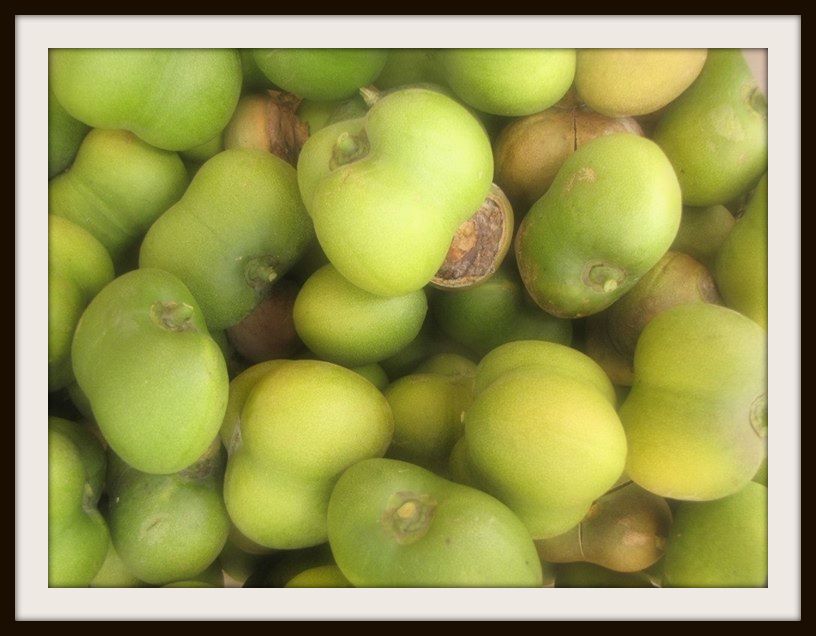BOGOTÁ, Colombia — For decades, if not centuries, the Amazon dwellers of southern Colombia made little of the cacay nut. They fed it to their livestock, used it to treat wounds and chopped down its trees for firewood.
Then, a few years ago, the global jet-setting crowd found out what the yellowish oil from the protein-rich nut could do for their skin. And suddenly, the cacay (pronounced kahk-ai) has become a red-hot commodity, providing the key ingredient to anti-aging facial creams that can fetch $200 an ounce in beauty shops in Los Angeles and London.
While most of the nuts come from wild trees in remote areas, new plantations are popping up in impoverished parts of Colombia that were better known for cocaine and anti-government rebel groups. Vitaliano Ordoñez, a farmer who used to give the nuts to his cows, sold eight of the animals to buy 120 saplings. Because only a few are mature enough to produce this year, he’s scavenging every kernel from two old trees on his small dairy farm in Puerto Rico, Colombia, 300 kilometers (190 miles) southeast of Bogotá.
“I won’t let even one nut go to waste,” said Ordoñez, 70. Each apple-sized nut pod contains three seeds, each bigger than an almond. He expects to collect about 60 kilograms (133 pounds) of cacay kernels this year. That may generate as much as 300,000 pesos ($198), or the equivalent of almost half the country’s minimum monthly wage.
The boom is in part the work of Alberto Jaramillo. While scientists have highlighted the nut’s virtues for more than a decade, it was Jaramillo, the head of Bogotá-based Kahai SAS, who found a market for the oil after attending trade shows and hiring a trial study of the oil’s use in skincare. Kahai, which buys nuts from growers and scavengers, including Ordoñez, expects to double sales this year.
Jaramillo’s Kahai sends workers through the countryside on motorcycles and trucks, sometimes driving more than 250 kilometers to hunt for trees and pick up nuts. During the harvest season from February to April, one mature tree can yield 400 kilos of nuts. Kahai pays 1,000 pesos a kilo for whole nuts, so about 400,000 pesos per tree. He’s also encouraging farmers like Ordoñez to plant more trees.
Native to parts of Colombia, Ecuador, Perú and Venezuela, the cacay nut was long used by indigenous people to treat wounds and light lamps. As those uses faded, trees that reached 40 meters (130 feet) high became appealing targets for loggers. That’s begun to change with the renewed appeal of natural oils as beauty treatments.
Sales of face oils are rising, sparking new products from cosmetics-maker L’Oreal and Procter & Gamble’s Olay brand made of everything from grape and apricot seeds to lavender and marjoram. Beauty oil sales at retailer Sephora tripled in three years. In the U.S., where high-end facial skincare sales have largely been flat over the past year, face oil sales surged 24 percent to $42 million, data from NPD Group show. They’ve more than doubled over the past two years.
The small but growing appeal of cacay in the $465 billion personal-care market has been fueled by the increased popularity of Morocco’s argan oil, which got picked up by hair-care makers such as L’Oréal and Unilever NV, and is now included in 14 percent of new hair treatments, according to market research from Mintel. Cacay contains key ingredients in anti-aging products, including antioxidants and retinoids, according to Kahai.
“It’s going to be the new little wave,” said Jamie Sherrill, who uses cacay in some of the Nurse Jamie skincare products she sells at her Santa Monica spa. “I was always a fan of retinol and argan oil, and we were initially searching for ways to improve on these two ingredients.”
Sherrill, who appeared with socialite Paris Hilton on the reality show “The Simple Life,” offers 1-ounce “facial elixir” with cacay for $198 and a men’s shaving oil version. A three-item set of anti-aging products with cacay retails for 1,060 pounds ($1,555) at Harrods department store in London.
The venture isn’t without risk for Kahai and small growers. While plant oils are hot now, cosmetics fads often change, and there is lots of competition from other plant oils.
“It’s more expensive than a lot of your regular oils,” said Judi Beerling, a research manager at the London-based consulting firm Organic Monitor. “As more becomes available, obviously the prices will become less of an issue.’
Jaramillo said some companies are holding off on using cacay because there isn’t enough stable supply. It could take another three years, he said.
”Our plan is to have enough volume for the boom that’s going to come from the cosmetic market, and anything leftover we can sell just as the edible nut,” Jaramillo said.
Kahai forecasts oil sales of 1.2 metric tons from this year’s harvest, double last year, and output will expand as the 100 hectares (247 acres) already planted with cacay trees start producing. It takes 2 kilos of kernels to make 1 liter of oil. The nut is about 53 percent oil, and Jaramillo says his next plan is to target the protein-rich flour thats leftover as a nutritional supplement.
The cacay revival also has given hope to environmental groups seeking to slow deforestation. Luis Eugenio Cifuentes, a Colombia adviser for the Arlington, Virginia-based Amazon Conservation Team, has been promoting cacay as a profitable alternative to logging. He talks to farmers in remote areas and is organizing a plan to buy trees that will connect isolated patches of rainforest.
For farmer Ordoñez, cacay offers the chance of supplementing the income he earns from milk and cattle sales.
“That’s how I live, with little money,” he said. “Cacay is something I think a lot about because I have a lot of faith that it will work out for me.”
© 2015, Bloomberg News






